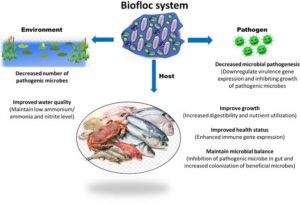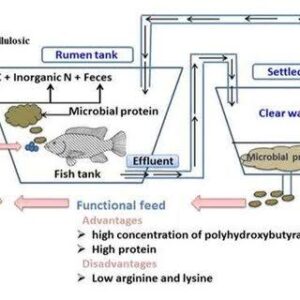Back to: MICROBIOLOGY 500 LEVEL
Welcome to class!
Hello my future aquaculture expert! I’m so glad you’re here today. We’re diving into a topic that connects microbiology with fish farming, one of Nigeria’s fastest-growing food industries. It’s called Microbial Biotechnology in Aquaculture. Whether it’s catfish farms in Ogun or tilapia ponds in Delta, this lesson will show you how tiny microbes are working behind the scenes to improve fish health, boost yields, and protect the environment.
Let’s get into it like we’re walking through a fish farm on a bright Nigerian morning.
Microbial Biotechnology In Aquaculture
What is Aquaculture?
Aquaculture is the farming of fish, shellfish, or aquatic plants in controlled water environments like ponds, tanks, or cages. In Nigeria, fish farming is huge, especially catfish and tilapia. But just like in poultry or crop farming, aquaculture faces challenges like disease, pollution, and poor water quality.

That’s where microbial biotechnology steps in—using beneficial microbes to solve these problems naturally.
Role of Microbial Biotechnology in Aquaculture
Microbial biotechnology means applying useful microorganisms or their products to support the health, growth, and sustainability of aquaculture systems. Here are the key ways this happens:
Probiotics
These are “friendly bacteria” added to water or fish feed. They:
Improve fish gut health and digestion.
Outcompete harmful bacteria.
Enhance immune response.
Example: Bacillus subtilis or Lactobacillus spp. in catfish feed help reduce disease outbreaks.
Biofloc Technology
This method uses a community of microbes to recycle waste (like ammonia from fish poo) into protein-rich flocs that fish can eat.
It:
Reduces water pollution.
Cuts down feed cost.
Increases fish yield.
Bioremediation in Fish Ponds
Microbes are used to clean pond water by breaking down harmful substances like uneaten feed, fish waste, or antibiotics.
Example: Using Nitrosomonas and Nitrobacter to convert toxic ammonia into harmless nitrates in tilapia ponds.
Disease Control through Microbial Vaccines or Antagonists
Scientists are exploring microbial-based vaccines and agents that prevent or fight common fish diseases like Aeromonas or Streptococcus infections without relying on antibiotics.
Why It Matters in Nigeria
Many local fish farmers can’t afford expensive drugs or feed additives. Microbial solutions are cheaper, safer, and eco-friendly.

With the rise of fish farming in Lagos, Oyo, and Niger states, microbial biotechnology helps improve water quality and fish health, leading to higher profits and better food security.
It also reduces antibiotic resistance—a major global concern.
Summary
- Microbial biotechnology in aquaculture uses helpful microbes to support fish farming.
- It includes probiotics, biofloc systems, bioremediation, and microbial disease control.
- These techniques improve fish growth, health, and water quality.
- In Nigeria, it provides sustainable, affordable solutions for fish farmers.
Evaluation
- What are probiotics, and how do they help in fish farming?
- Explain the role of microbes in biofloc technology.
- Why is microbial biotechnology important for aquaculture in Nigeria?
You’re doing wonderfully, my aquaculture scientist! By learning how microbes support healthy fish farming, you’re preparing to help feed millions and build a more sustainable agricultural future for Nigeria. Keep learning and growing—Afrilearn is right here, cheering you on to greatness. See you in the next class!
